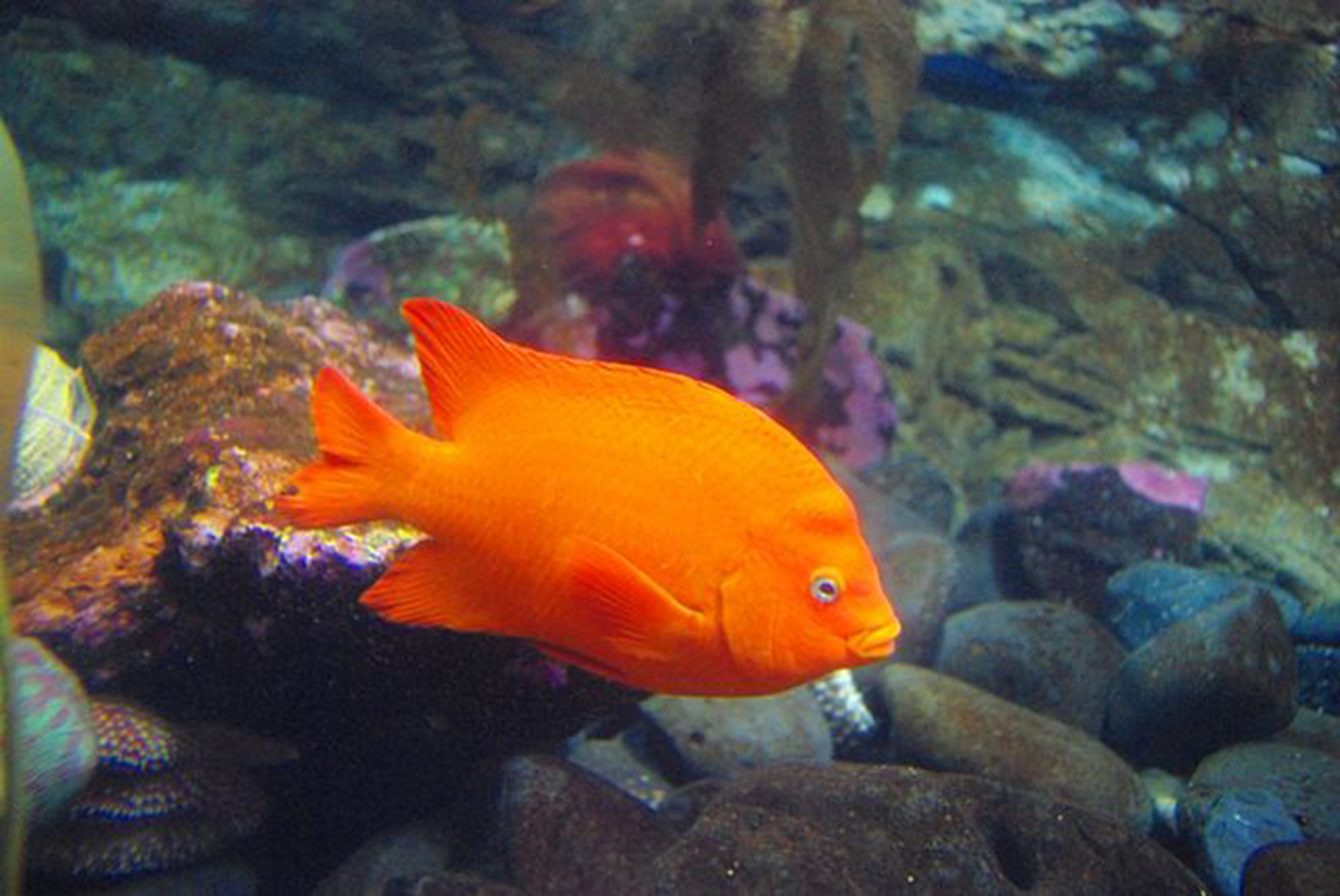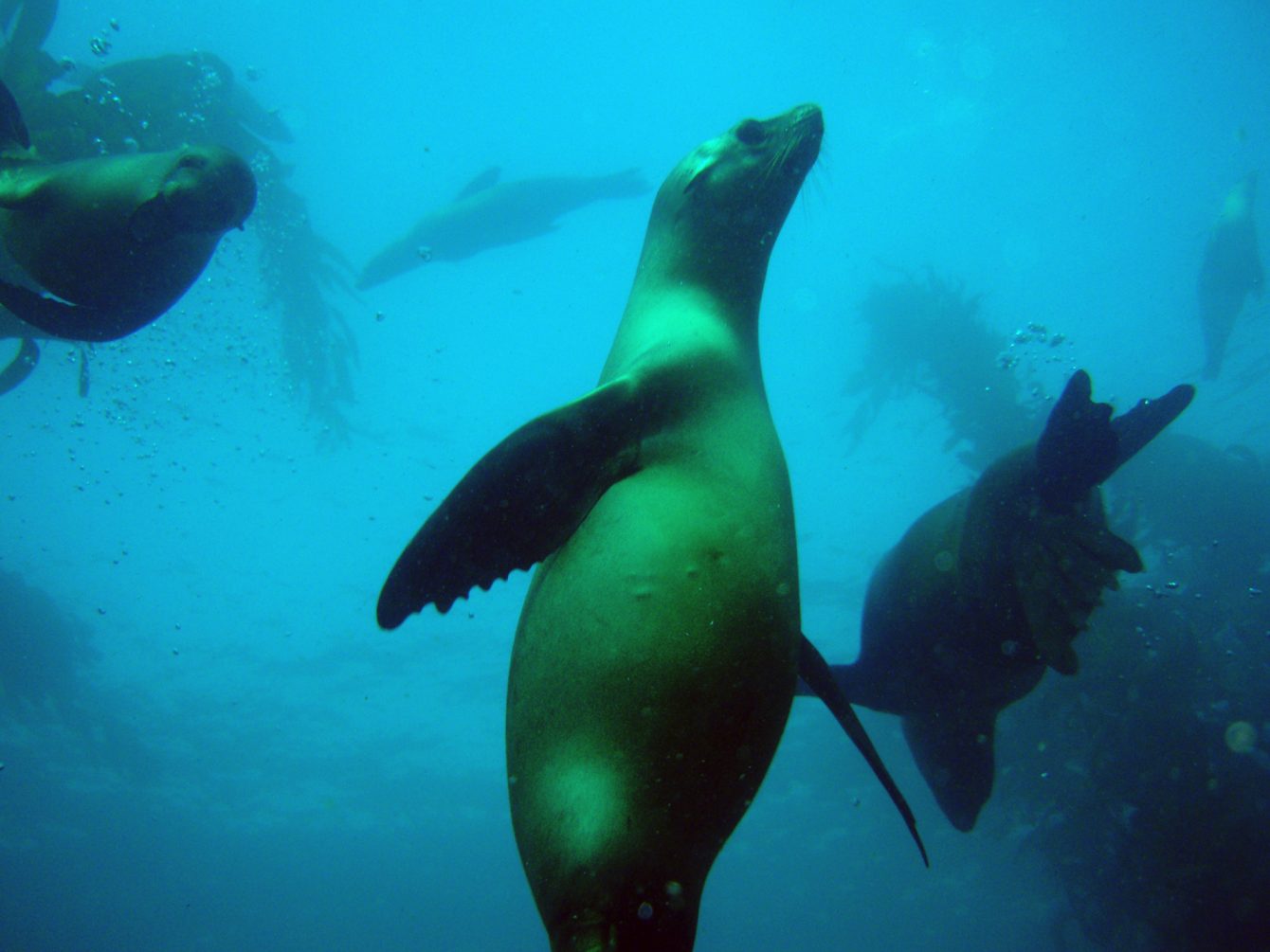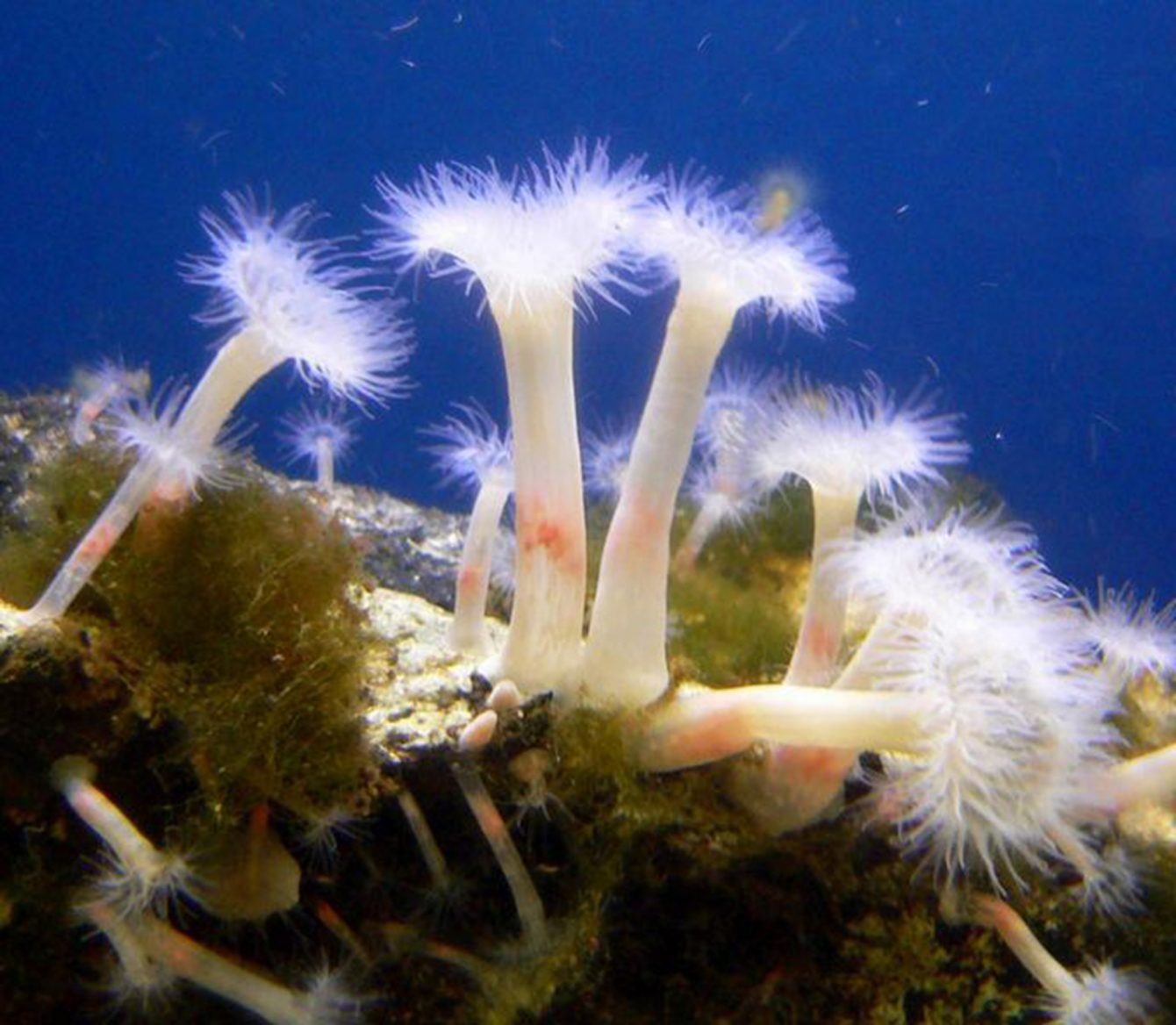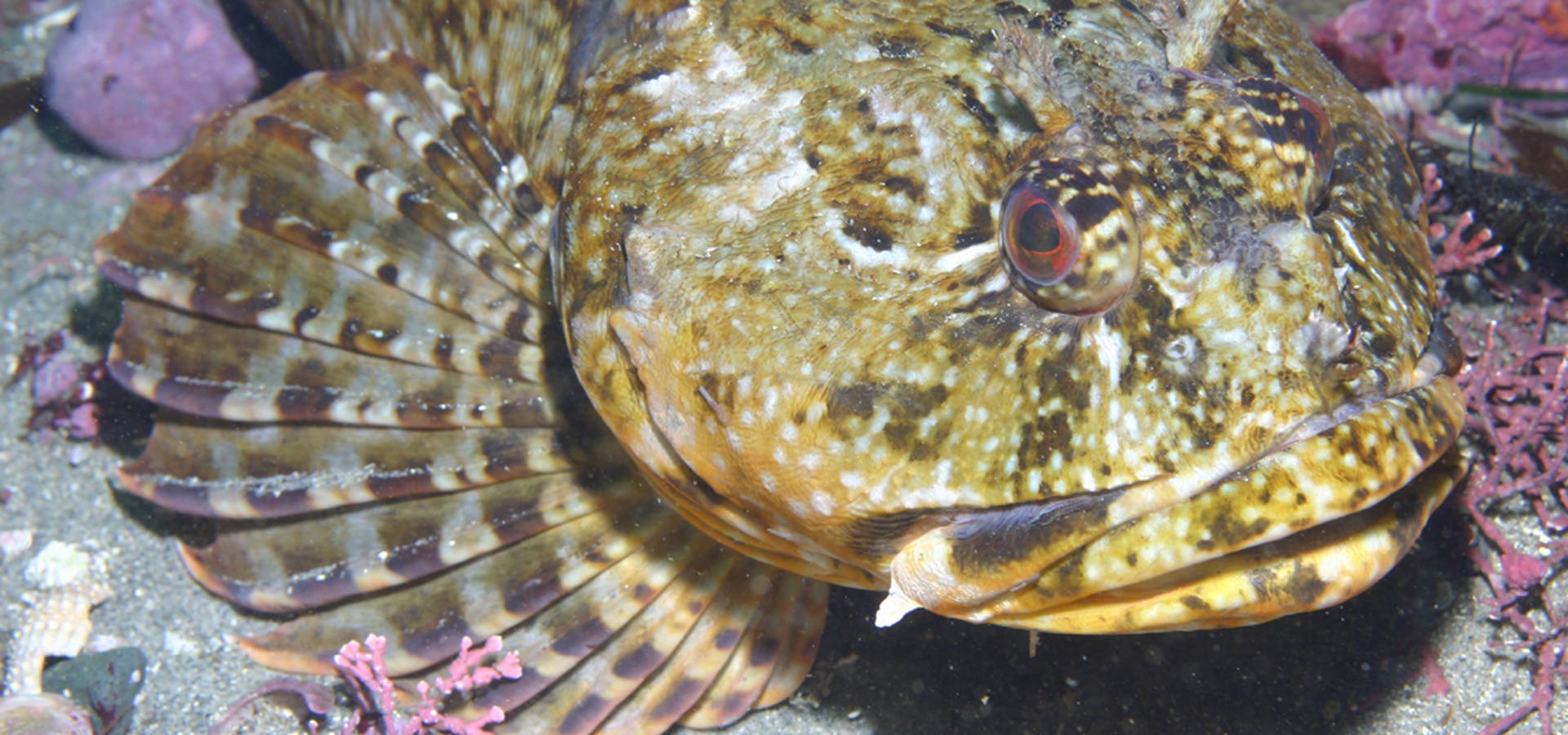
This is how Allison and Andy Sallmon describe their Eureka Oil Rig dive in a photo essay published on scubadiving.com:
“The boat pulls close to the huge structure, disturbing the sea lions draped lazily across the moorings and inciting a cacophony of barking protest. We’ve arrived at the Eureka oil platform, our favorite of the three diveable rigs near Long Beach. The captain shifts the boat into neutral as the divemaster calls out, ‘Ready? Dive!’ Pairs of divers oblige, and soon it’s my turn on the swim step. As I enter the water, the butterflies in my stomach have returned. It’s a familiar sensation. Despite the hundreds of hours I’ve spent underwater here, descending under the platform still spooks me. Since the huge surface structure blocks out much of the ambient light, it takes my eyes a minute to adjust to the dark water. The lattice of giant steel beams extends into the depths, beyond my sight and far beyond recreational limits, crossing horizontally at 60-foot intervals to create a beckoning series of levels. The noise of these working structures adds to the eerie ambience, as thundering resupply boats arrive and hisses accompany bursts of bubbles that periodically emerge from the depths. I pass a thermocline that drops the temperature 8 chilly degrees as the current abruptly shifts and speeds up. I watch my gauges vigilantly. When we reach our maximum depth of 140 feet, my buddy and I level off and flash each other eager ‘OK’ signs (his more eager than mine).”

According to Sport Diver, August is prime time to explore hidden treasure under the Eureka Oil rig several miles off LA shores.
“The rig plunges 720 feet into the Pacific, making it the deepest of the rigs accessible to divers off California’s coast. Fin about the rig’s colorful legs, stretching out like a Wellsian invader, and you may spot California’s famous sea lions, baitballs and even pelagics like mola mola and large jellyfish enjoying the safety of the no-take zone. The little stuff can be seen here too. Anemones, brittle stars and scallops line the structure, while crabs and nudibranchs capitalize on the free rent. This diamond in the open blue offers a new experience on every dive.”

Ready to check it out for yourself? Here are some essentials:
Water Conditions
Temps from the 50s to 60s, with visability from 30 to 100 feet.
What to Bring
A large surface signaling device.
What You Need to Know
Current and surge can make boat pickups difficult.
When to Go
Between July and December for the best visibility.
Where to Go
www.pacificstardiving.com
Get a preview of the dive here.
Discover more diving news and information at www.sportdiver.com.
Rig photo courtesy of Beta Offshore










